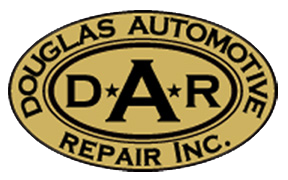You’ve just purchased a new vehicle and already a dashboard warning light is on, but this is one you might not have seen before. There’s a good chance it’s the new warning light tied to the Tire Pressure Monitoring System (TPMS), which as of 2008, is standard on all new cars and light trucks.
When this warning light comes on, it means pressure in at least one of the tires has fallen 25 percent under the recommended pressure. Low tire pressure can be due to a number of factors, including climate, road hazards and driving conditions. Although it varies by vehicle, the warning light will go off when tires are inflated to the correct pressure as outlined in the owner’s manual. Nearly 250,000 accidents occur in the United States per year due to low tire pressure and about 75 percent of roadside flats are preceded by a slow leak or under inflation. In addition to safety, properly inflated tires last longer, wear more evenly and can reduce fuel consumption by 10 percent and save drivers money at the pump, according to Schrader-Bridgeport International, Inc., a manufacturer of direct TPMS products.
Although tires are a critical safety component on any vehicle, they are often neglected. Free car care inspections, held in conjunction with National Car Care Month last year, showed that 14 percent of vehicles had improperly inflated tires and 24 percent had worn tread and were in need of replacement.
In the fall of 2000, Congress passed the Transportation Recall Enhancement, Accountability and Documentation (TREAD) Act that requires a warning system to indicate under inflated tires. Under the act, automakers had to be 70 percent compliant as of Sept. 1, 2006 and 100 percent compliant Sept. 1, 2007.
If your car is equipped with TPMS, Douglas Automotive Repair Inc can check the sensors when we service your tires to make sure they’re all working properly. If it isn’t, replacement of the valve sensor may be necessary. It will also be necessary to reprogram your TPMS sensors after replacement and after rotating the tires, depending on whether your system is location dependent.
Questions about your TPMS sensors? Call us today, we can help!
This entry was posted in Preventive Maintenance, Safety, Tires and tagged Preventive Maintenance, Safety, tires, TPMS on .


